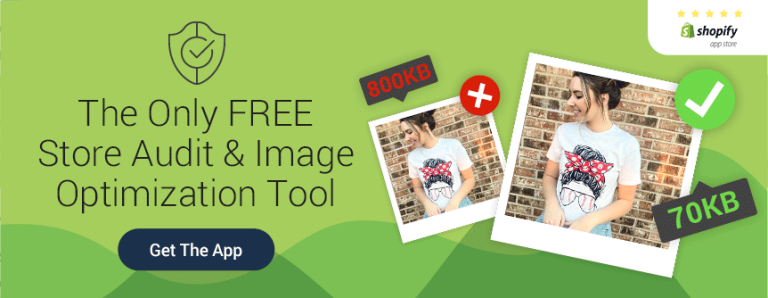
- Posted on
- • December 12, 2019
- Ecommerce 101
- Ecommerce Resources

Table of Contents:
Selling on Amazon seems almost like a no-brainer for any modern merchant. As one of the most visited websites in the world, Amazon provides an effective, high-traffic platform that takes much of the hassle out of selling online and serves as a source of product discovery for shoppers. For some merchants, selling on Amazon is necessary to making sure their products are found.
Unfortunately, selling on Amazon isn’t quite as straightforward as it sounds. Successful selling requires a considerable amount of resources to make sure your products are seen by the marketplace’s millions of users. Once shoppers actually discover your products on the marketplace, they will need to be convinced that your brand is worth buying from. If you’re looking for the steps to get started selling, HubSpot provides a great guide on how to sell on Amazon for beginners.
In this guide, we’ll take an even deeper dive into what it takes to be a successful online merchant—both on Amazon and off. We’ll discuss the practicalities, pros, and cons of selling with Amazon. You’ll learn not only what you need to be successful in the marketplace, but also how you can combine Amazon and your own website into one effective sales and marketing machine.
How to Sell on Amazon Successfully
Successfully selling products on Amazon typically involves six key steps:
- Find a profitable product to sell
- Set up your business account
- List your product(s)
- Optimize your product(s)
- Prepare items for shipment
- Ship products to fulfillment centers (yours or Amazon) for customer delivery
Of all the steps listed above, #4 is often the toughest to get right. A fully optimized product listing will help shoppers locate your product amid countless others. Product promotions and Amazon’s PPC ads are simple investments you can make to increase traffic to your Amazon product pages.
To attract shoppers, your product copy must address a need or problem and explain why your product(s) is the best solution. Relevant keywords, high-quality product photos, and compelling copy all help to create and close the sale.

Due to the sheer size of Amazon’s marketplace, you may find yourself competing with many similar products and unauthorized sellers. If you have a U.S. registered trademark, you might consider registering your products through Amazon’s Brand Registry program to safeguard your brand against unauthorized sellers and to better control your product quality and consistency.
After a customer finds and purchases your product, the next piece of the puzzle is getting the products to them. This is where you get to determine your business’ fulfillment strategy.
Selling With Amazon FBA
Amazon Fulfillment, also known as “Fulfilled by Amazon” or FBA, is a popular option for many merchants. The built-in order fulfillment service handles shipping and returns for eligible sellers, quickly delivering products to your customers across a wide geographic network.
Although the service is a convenient way to outsource your logistics, Amazon FBA puts your entire inventory and supply chain in Amazon’s hands. This means you risk dealing with increased returns, inventory tracking difficulty, and complicated shipping preparations.
For further reading, Wordstream has an excellent guide for selling with Amazon Fulfillment.
Selling With Amazon Prime
Participating in FBA allows your products to be shipped via the Amazon Prime 2-day delivery service, giving you access to a large base of active shoppers—82 percent of U.S. households have an Amazon Prime membership. It serves as a free and easy marketing tool to attract shoppers, who are more likely to purchase your product with a fast and trusted shipping option.
To sell your products with Prime, you must be already selling on Amazon FBA and have solid seller metrics (e.g. low returns, positive reviews, sufficient inventory, and product visibility). You could also be eligible for Seller Fulfilled Prime, in which you are responsible for inventory and shipping.
Pros and Cons of Selling with Amazon
As a well-trafficked and consumer-trusted marketplace, Amazon offers enormous sales potential for your business. Sellers benefit from the infrastructure and resources Amazon invests into its platform, including a streamlined supply chain, solid back-end, and SEO strength—all of which can allow businesses to scale faster.
However, Amazon’s large customer base means competition is stiff. Sellers compete with millions of other merchants, including those who sell similar products (an issue for those who have private-label products), and often have to contend with unauthorized sellers.
Can You Still Make Money Selling on Amazon?
Amazon can be a fantastic lead and traffic generation engine for your business, but succeeding with Amazon isn’t as easy as putting products out there and expecting them to sell. In order to make money, you’ll want to make sure your products are visible on Amazon’s network.
Your listings need to be informative, compelling, and focused on the benefits of your products. This helps to bring in shoppers, sustain their interest, and lead them toward a purchase. Optimizing your product pages with strategies such as registering your brand and achieving “best seller” or “Amazon’s Choice” status can strengthen your Amazon presence.
Is it Profitable to Sell on Amazon In the Long Run?
Amazon can be an effective platform to increase brand awareness and drive product sales. However, as the marketplace becomes saturated with more products (and sellers), a strong independent web presence will be critical to achieving your overall business goals.
The truth is that Amazon shoppers typically don’t care about who they purchase from as long as they get the products and prices that they are looking for.

When shoppers do purchase your products, they remember Amazon’s brand instead of yours—it’s Amazon that shipped the products and who they return to for similar items. While that doesn’t mean the marketplace isn’t profitable for your business, it does mean that you shouldn’t put all your eggs into one basket and sell exclusively on Amazon.
The bright side is that 75 percent of consumers still consider brand name when selecting a product. To have long-term profitability, you need to have your own brand equity. This allows your business to stand out on Amazon and will give you an edge when shoppers come across your brand. We’ll talk more about how to achieve that brand equity further down.
Other Marketplaces: Selling With Amazon vs. eBay
Amazon isn’t the only player in the game. As global ecommerce marketplace revenues are expected to double to $40.1 billion by 2022, you might be considering alternative marketplaces like eBay, Etsy, Rakuten, and Alibaba to sell your products on.
eBay is another household name, offering advantages over Amazon like a more expansive global reach, cumulatively lower fees, and more seller tools. eBay has its disadvantages, however, like with no delivery fulfillment options, slower bulk product upload, and a smaller consumer base in the U.S.
To choose the right marketplace, you will need to factor in the type of products you sell, your competition, tolerance for fees, preferred user experience, customer support requirements, and fulfillment needs.
Selling on a marketplace can boost your business with unprecedented traffic and an engaged audience that’s ready to buy—all with less upfront investment. This does, however, come at a price. You have fees and limited control over your inventory, brand, and customers.
Selling on Your Own Website
Despite the popularity of marketplaces, a formidable 55 percent of shoppers prefer to buy products from brands directly. This is especially true among millennials.
Selling on Amazon binds you to their rules and ties you to a uniform format. As the middleman between your business and the customers, Amazon has control over the sales experience, branding, and customer data. Your own site, on the other hand, allows you to take back your ecommerce experience.
On your own site you have direct control over how your products are merchandised and don’t have to compete with countless other vendors for shopper attention. Your efforts generate customer loyalty for your own brand as opposed to Amazon, presenting more opportunities for you to obtain shopper data and personalize your marketing to customers. Selling independently of a marketplace also means you have more take-home revenue.
So, how do you build a successful ecommerce experience and brand equity outside of Amazon (or any other marketplace)? To stand out, you have to create a second-to-none experience that is worth coming back to. Whether that’s offering a joyful shopping experience, leveraging exclusive user-generated content, or promoting a tool for shoppers to personalize their products, your independent website needs to provide something of value that goes beyond the product—the one thing that Amazon can’t do.

With a best-in-class website in your arsenal, you are able to truly own the sale while supporting the customer journey and creating lifelong connections that sustain your business.
Amazon + Your Site = Ecommerce Excellence
Selling on your own site requires you to invest resources in all aspects for success, from your SEO to your advertising. If you do not dedicate the proper time and resources into your website, you could potentially cut off a huge market for your business.
A key advantage Amazon offers sellers is their extensive reach, which helps you capture the attention of customers who might not have come across your brand otherwise.

This can be a huge boon to your own website. You can leverage Amazon’s credibility and popularity to bring in new eyeballs to your products and leverage their credibility. However, as shoppers become more interested in the brand behind the products, your website can serve as a great engagement and upselling tool, setting your brand apart.
Once shoppers discover your site, you can communicate with them through outlets like email marketing, content, and social media. Whereas Amazon safeguards customers at every turn, your website allows you to impress visitors, nurture the relationship, and turn shoppers into lifelong repeat customers.

When it comes to selling online, Amazon can take much of the guesswork out of running your business. However, even when selling products on Amazon, there should be no guessing as to whether you need to have your own website. Think of Amazon as a complement to your online presence. While it can help increase sales and product reach, it’s your top-notch website that will keep your business competitive, relevant, and profitable.
Ready to succeed on Amazon and off? Check out our strategic checklist for selling with Amazon:





